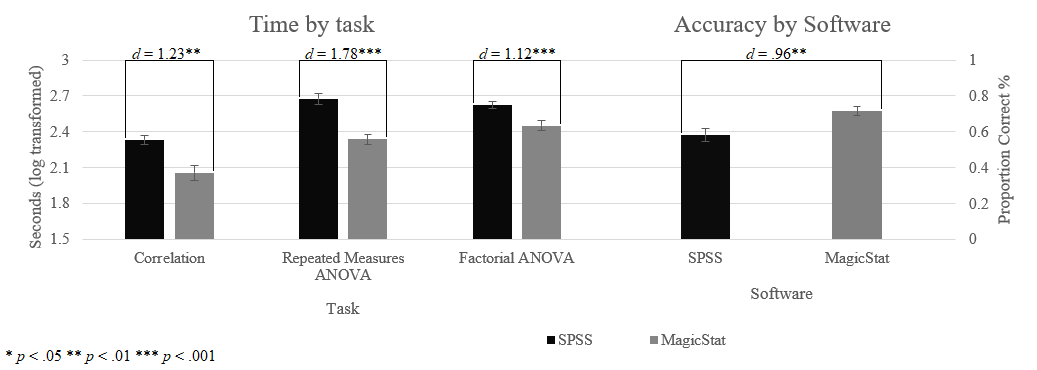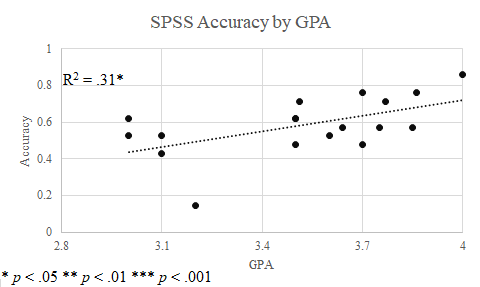MagicStat, 1.1.7, Copyright © 2022 Merjek, Inc. , Web Server 1
We turn data into information
We turn questions into answers
What is MagicStat?
MagicStat is like all the other stats software packages out there, except, you know, better. We help you explore and analyze your data in a minute. Yes, it’s
like
Magic.
Ingredients of MagicStat
- Magic
- Other stuff
(if you must know) MagicStat is built on Python and Django.
Our vision
We believe that if you have a research question, you shouldn’t need years of statistics education to answer it. Let us help you.
Benefits of using MagicStat
- Cost-effective data analysis: MagicStat is a free data analysis tool. That’s why you’re here, right?
- No deep statistics knowledge needed: You do the stuff you’re good at; let us do the stuff we’re good at.
- Easy access via any web browser, anytime, anywhere: Chrome, FireFox, Safari, and Microsoft Edge.
- No coding needed: Our interface is entirely pointy-clicky, so no need to code any commands like those other packages.
- Rich visual analytics integration: Ooooh, pretty!
- Data import/export support: We let you import and export your data in well-known file formats on our system:
- Comma-separated (.csv)
- Microsoft Excel (.xls, .xlsx)
- SPSS (.sav, .zsav)
- More data types coming soon...
The current supported statistical models
- Pearson correlation: A widely-used parametric test that measures the strength and direction of the relationship between linearly related variables
and is the
appropriate correlation analysis when two measured variables are normally distributed.
- Spearman's correlation: A non-parametric test that is used to measure the degree of association between two variables. It is the appropriate
correlation
analysis
when the variables are measured on a scale that is at least ordinal.
- Kendall correlation: A non-parametric test that measures the strength of dependence between two variables.
- Chi-Square Goodness-of-Fit Test: Used to determine whether sample data are consistent with a hypothesized distribution when you have one categorical
variable
from
a single population.
- Chi-Square Goodness Test for Independance: Used to determine whether there is a significant association between two categorical variables from a
single
population.
- Independent Samples t-test: Parametric method that compares the means of two independent groups in order to determine whether there is
statistical
evidence
that the associated population means are significantly different.
- Paired Samples t-test: Used to determine whether there is statistical evidence that the mean difference between paired observations on a
particular
outcome
is significantly different from zero.
- One Sample t-test: A parametric test that determines whether the sample mean is statistically different from a known or hypothesized
population mean
- Logistic Regression (Logit): Predictive analysis used to describe data and to explain the relationship between one dependent binary variable and one
or more
nominal, ordinal, interval or ratio-level independent variables
- Linear Regression: Used to summarize and study relationships between two continuous (quantitative) variables
- One-Way Between Subjects ANOVA (One-Way Non-repeated Measures ANOVA): Used to determine whether there are any statistically significant differences
between
the
means of two or more independent (unrelated) groups.
- Two-Way Between Subjects ANOVA (Factorial Non-repeated Measures ANOVA): Used to determine whether there are any statistically significant differences
between
the
means of two or more independent (unrelated) groups of the given two factors.
- One-Way Within Subjects ANOVA (One-Way Repeated Measures ANOVA): Used to compare three or more group means where the participants are the same in
each group
and
one factor is repeatedly tested.
- Two-Way Within Subjects ANOVA (Factorial Repeated Measures ANOVA): There are two within subjects factors which are repeatedly tested and used to
compare
three or
more group means where the participants are the same in each group.
- Two-Way Between Subjects and Within Subjects ANOVA (Mixed Factorial ANOVA): There is a between subjects factor and a within subjects factor which is
used to
compare three or more group means of two factors where the participants are the same in each group.
- More Models Coming Soon
Data support
At the moment, we support structured data up to 500 variables and 1,000,000 data points.
Data Privacy
Your data is just that: your data. We never use the data you upload for any purpose other than your analysis. In fact, we destroy any data after you
upload it
to
the site. Yeah, we take this seriously.


